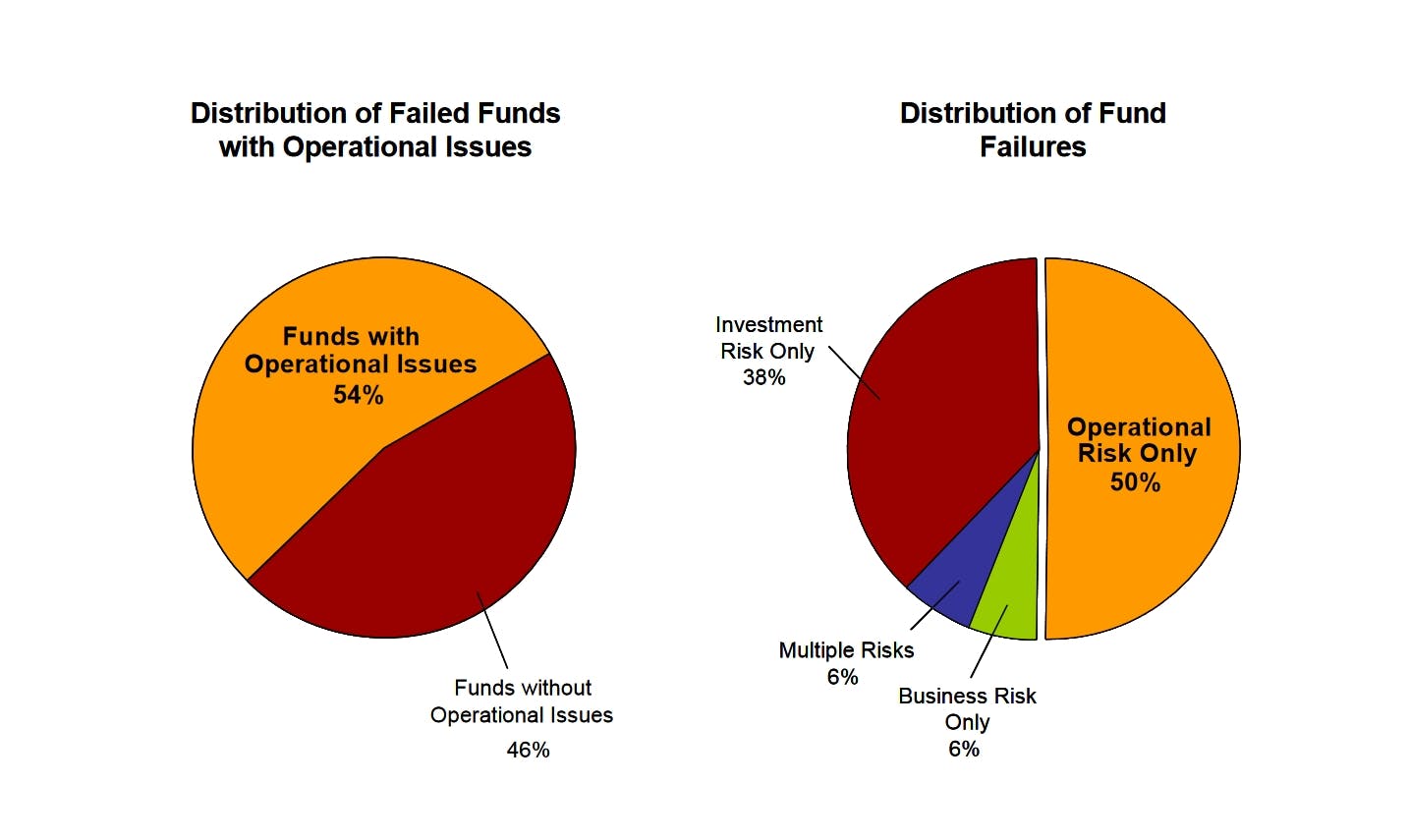This article was originally posted here. By Mikhail Kirilin
Each hedge fund company is organized into three departments — the front office, middle office, and back office.
Front office operations cover the bread and butter of the business. It consists of portfolio managers, research market analysts, and traders doing their best work to meet their investors’ demands. They think of the best investment strategies that can bring more profit through market and trading analysis.
Middle office operations consist of risk managers, the sales team, and the marketing/investor relations team. Risk managers oversee whether PMs authorize reasonable strategies without risking too much of the investors’ money like a check and balance system. Meanwhile, the sales and marketing teams interact with client investors and prospects — passing on this feedback to the front office to gauge their clients’ market sentiment.
Back office operations are like the sweepers among a group of hikers. This includes the accounting, compliance, admin, reconciliation, and reporting teams. They are responsible for making sure that everything is in its proper place. Transactions must be recorded and accounted for, performance reports must be consolidated, and overall operations must be in compliance with regulations.
Key Challenges in Back Office Operations
The majority of hedge fund companies do not fail because of investment performance. But rather, 50% of failed hedge funds are due to operational issues, according to a Capco study.

Source: Capco (2003)
A lot of what happens in back office operations is muscle work. That’s not to diminish the roles of the back office department. Their role is crucial especially when it could result in losing the clients’ confidence when not executed properly.
In an article from The Hedge Fund Journal, cyclic problems were presented involving back office operations. These are some of the key challenges that affect the overall performance of hedge funds.
1. Mismatched Subscription and Share Prices
This may be a problem of an understaffed back office or it could be the lack of flexibility in handling growing investor clients. One common mistake that’s observed in the industry is to use the previous month’s price for new subscriptions, rather than at the start of the period. To avoid further complications, some back office operations professionals choose to simplify the process.
2. Inaccurate Investor Income Allocations and Fee Calculations
Another prevalent issue within the hedge fund industry is when income allocation is solely based on the investor’s capital when it should depend on the eligibility of each investor. The same is observed with management and performance fees — inaccurate rates are used for different classes of investors.
These problems continue to exist because hedge fund companies still use outdated data management tools. In a survey for the UK hedge fund industry, the most used software application is still spreadsheets. Spreadsheets have limitations in systematizing data, which are demonstrated in inaccurate calculations.
3. Investors Complain of the Lack of Transparency in the Performance Reports
Some performance statements presented to investors only show the income, the capital balance, and the performance rates. For a company that manages millions worth of assets, there are a lot of gray areas. More and more investors demand transparency of how their money is handled. While for others, they could just simply withdraw and disassociate themselves from the hedge fund company.
Best Practices in Back Office Operations
Here are the leading future trends in the hedge fund industry that aim to solve the gaps in flexibility, operational risks, transparency, and accountability.
1. Outsourcing Third-Party Service Providers
Hedge fund companies should be focused on investment-related operations. The rest of essential back office operations can be outsourced from third-party service providers. Since they specialize in creating efficient systems, they can use their sophisticated tools to streamline back office operations.
WNS (Holdings) Ltd. is an example of a third-party service provider that helps businesses across different industries, including financial services, transform their operational outcomes. They use technology, analytics, and business models to streamline operations in accounting, human resources, customer relations, and procurement.
2. Automation & Artificial Intelligence
Not only does automation free up the workload of back office employees to focus more on investing strategies. It also reduces human error thereby increasing efficiency in operations. Algorithms and systematic coding are just the stepping stone — artificial intelligence is the ultimate goal. Through machine learning and deep learning, computers can think like humans analytically.
Ansarada, a SaaS company, has several features that can ease setbacks in the back office. Here are a few application examples:
- feature saves time in organizing bulk files. Just upload all needed files and AI sorts them into topic categories. It can also track documents in real-time for full security.
- The Audit Pathway feature provides full transparency of financials and up-to-date accuracy of the auditing process.
3. Cloud Technology
This future trend is not entirely new, but it has been adapted mainstream by a lot of companies. Cloud technology enables a smooth collaboration among departments through a centralized online database. As claimed by a 2013 NSK Inc. Survey, cloud technology helped 82% of the participating companies to cut operational costs.
A good example of a software platform that uses cloud technology and AI is the MetaTrader 5. It’s an all-in-one platform that helps automize fund management — not just with the back office, but also including front and middle offices. Some of the software solutions that platforms like MetaTrader 5 offer are:
- No need to consolidate reports since investors can log in from anywhere and see real-time data on the AUM performance;
- Fast accommodation of investors’ requests through direct communication to the broker within the system;
- Front office traders get access to strategy algorithm testing on historic data or real market data through a cloud network;
- Middle and back-office staff have access to ready-made robots for clerical work;
- Assets under management can vary across 80 markets (e.g. stocks, bonds, futures, etc.) and global exchanges.
In conclusion, software solutions are here to help hedge fund companies streamline their back office operations.
Through outsourced third-party service providers (e.g. WNS Holdings Ltd.), automation & artificial intelligence (e.g. Ansarada), and cloud technology (e.g. MetaTrader 5), hedge fund companies can better serve their investors.
In this fast-paced world, the odds are in favor of companies that are flexible to adapt to technological changes.
What we do?
If you are looking to build a high-performing quantitative trading team but don’t know where to start? Look no further! Our team of experts has a wealth of experience in building and managing quantitative trading teams for a variety of financial institutions.
We understand that building a quantitative trading team is a complex and costly process that requires a significant investment in terms of time and resources. That’s why we offer a range of advisory services to help you navigate the process and ensure that your team is built to perform.
Check out our website here.
Our services include:
- Defining your goals and strategies: We work with you to understand your investment goals, strategies and risk management, helping you to define the specific skills and expertise that you will need in your team.
- Identifying and recruiting the right talent: We have a network of highly qualified individuals with experience in quantitative finance, computer science and mathematics, who can help you build a team of top performers.
- Developing a robust infrastructure: We help you to build a robust infrastructure that can handle large amounts of data and execute trades quickly, including hardware, software, and networking components.
- Developing a robust risk management system: We help you to put in place a robust risk management system to minimize your risk and maximize your return.
- Test and optimize strategies: We use backtesting, paper trading, and other methods to test and optimize your strategies before deploying them in live markets.
- Continuously monitor and improve: We continuously monitor your strategies, infrastructure, and risk management systems to help you to stay ahead of the competition.
Source: Auto Draft



